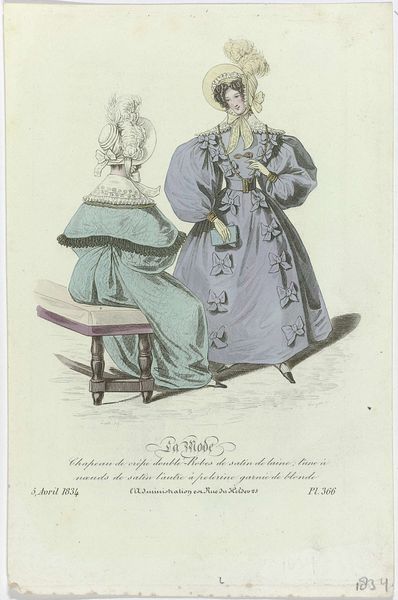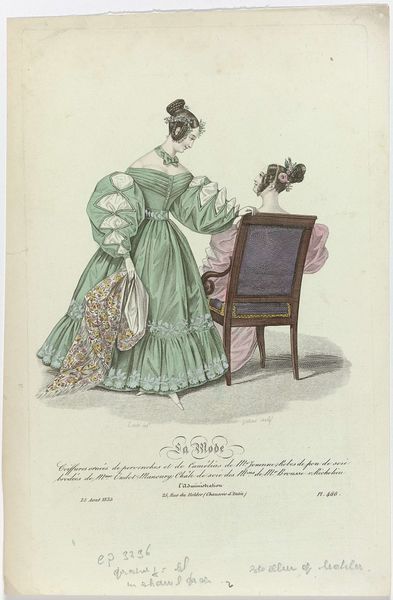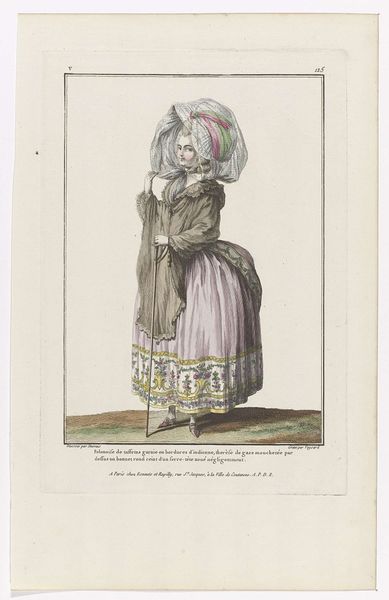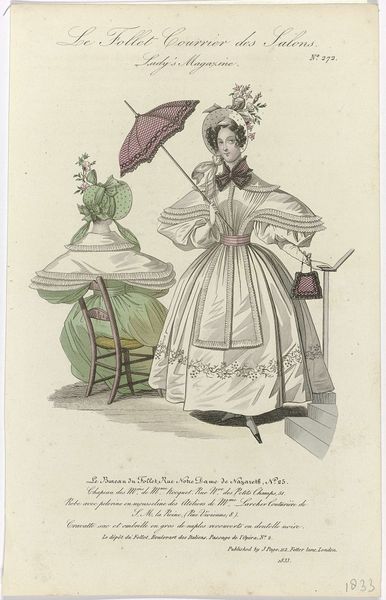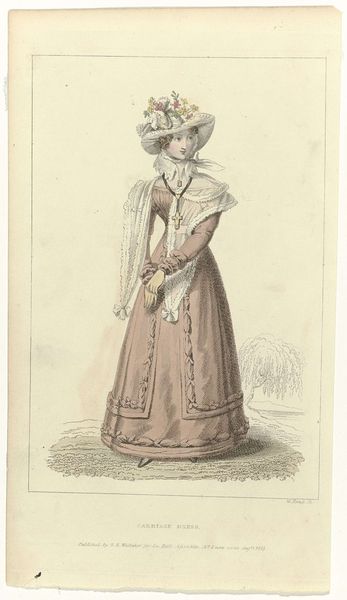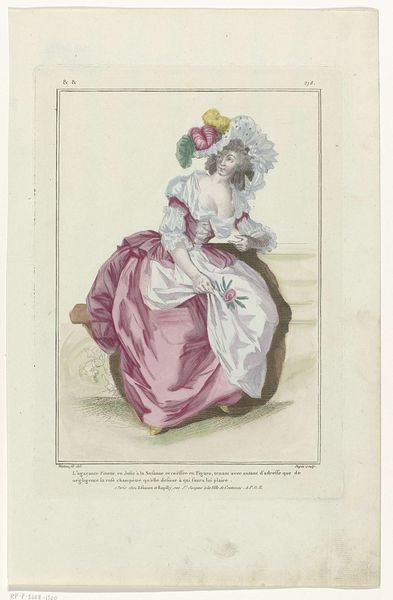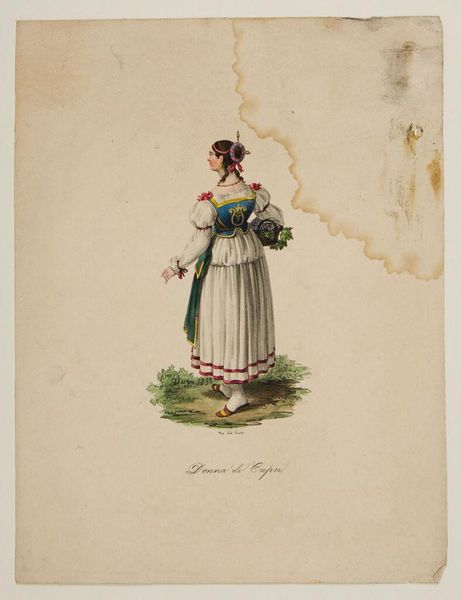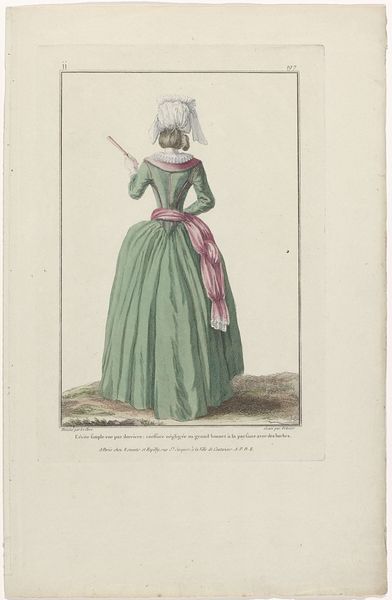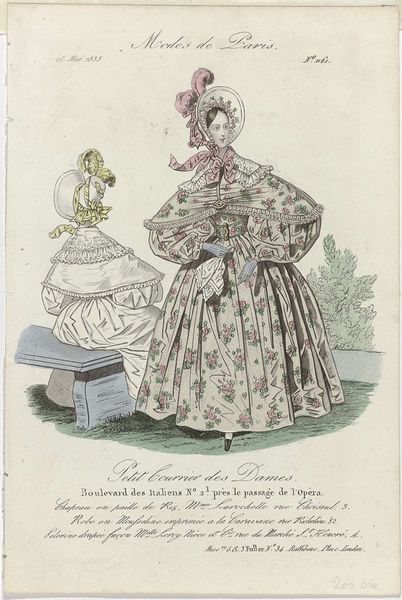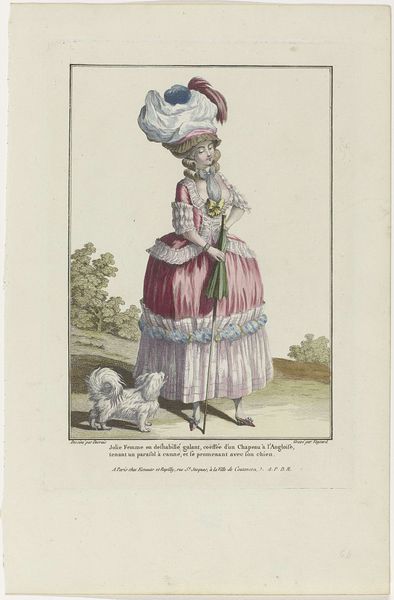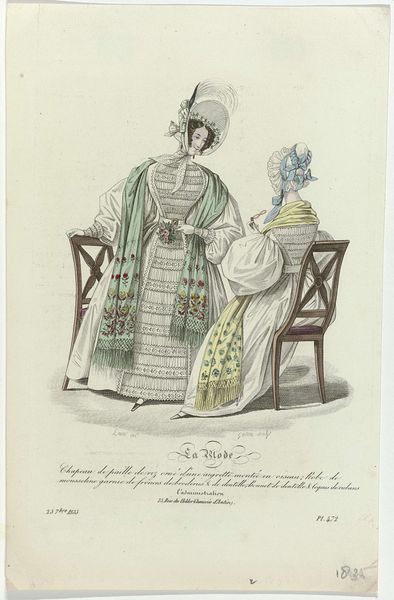
Journal des Gens du Monde, Modes Paris. décembre 1833 : Toilette du soir (...) 1833
0:00
0:00
print, watercolor
#
portrait
# print
#
watercolor
#
romanticism
#
watercolour illustration
#
genre-painting
#
watercolor
Dimensions: height 287 mm, width 221 mm
Copyright: Rijks Museum: Open Domain
Curator: Looking at this watercolour illustration entitled “Journal des Gens du Monde, Modes Paris. décembre 1833,” created by Paul Gavarni, one immediately notes its delicate yet purposeful lines. There’s a quiet elegance in the composition. Editor: It feels distinctly *manufactured*, doesn't it? All that attention dedicated to details of clothing and the pose feels…laborious. The textile production implied – from the weaving of that pink brocade dress to the crafting of the elaborate lace shawl – it’s an intense concentration of materials and human energy focused solely on outward appearance. Curator: Precisely. Consider the context: these fashion plates were instrumental in disseminating Parisian style. It was a tool for constructing and maintaining social hierarchies through aspirational imagery. Publications such as the "Journal des Gens du Monde" influenced a sense of style, and promoted luxury goods. Editor: And not only maintaining existing structures, but creating new markets. The image here naturalizes that relationship between labor and consumption, concealing the human toll in pursuit of these fleeting trends. Who made those materials? Who bought the products? These images don’t reflect any real material reality; just ideals divorced from production. Curator: True, yet one could argue it does reflect *a* reality – that of the privileged consumer class, shaped by its time and tastes, even as it shaped others. These publications provide invaluable visual records of fashion and manners. The setting suggests domestic life, leisure, and wealth; the attire, access to textiles and professional tailoring. Editor: It is intriguing to contemplate the distribution process. Was it widely distributed or only available in certain shops? The artwork has very specific information about where materials come from...I would imagine distribution involved another entire sphere of workers making this imagery readily available and profitable for the fashion world and merchant houses. Curator: I find that focusing on these pieces reminds me of how the socio-political currents are visualized, or masked within seemingly decorative objects. It prompts a dialogue, wouldn't you say, about how taste, labor, capital and history interplay, shaping even the lightest brushstroke in art? Editor: Yes, by studying even something like a fashion plate, we’re also analyzing larger trends of labour, production, and systems of creating desire.
Comments
No comments
Be the first to comment and join the conversation on the ultimate creative platform.
